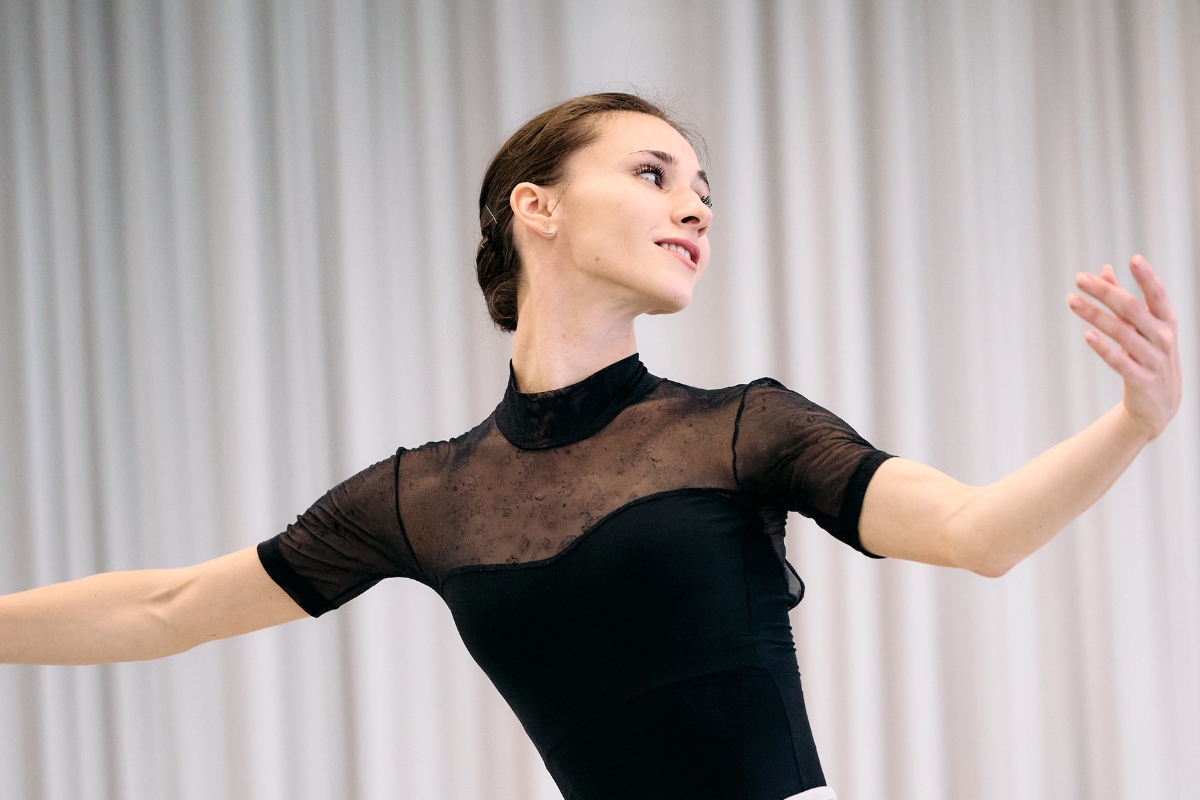interview by Lucie Kocourková
We met Maria Baranova, prima ballerina of the Munich Ballet, thanks to the Bubeníček International Ballet Gala project. This fragile dancer radiates enthusiasm for her profession and strives to popularize ballet by all possible means. We talked about her rich experiences from engagements in Europe and the United States, about John Neumeier, or about the specifics of early romantic ballets. It will be a bit of a long read, but I believe it’s worth it:
Where do you know Jiří from – from Hamburg?
I do know him from Hamburg, but I didn’t dance with him because at that time he was already working in Dresden. I came to the company just a while before he left and I worked with his brother Otto, who was still a member of the company and Jiří was visiting many times. I was following his works. And I remember when he came to a ballet gala in Finland in Imatra and he was showing his choreography set on Canon in D Major by Johann Pachelbel. I was so inspired. He’s a very charming and enormously talented artist. As students, we watched his performances on video, such as Illusions – Like Swan Lake and Nijinsky, and I still watch them to this day for inspiration.
They both are kind of our national heritage, probably our most famous dancers together with Daria Klimentová.
I feel it’s very important for you. It’s especially significant that they keep on contributing to the ballet world even after their dancing career is over, to give to the next generation. Organizing masterclasses and galas is extremely demanding and I admire Jiří for doing it and for how he manages it.
How old were you when you participated in the Prix de Lausanne? That was the starting point of your career.
I was 15 and 8 months precisely. It was amazing, and I received a scholarship by Mr. Neumeier. It was all very quick. After six months, he took me on tour to Japan, where we spent about six weeks and after the tour he offered me a contract with Hamburg Ballet. He said: “I know it’s early but you have the maturity to step into this world professionally and I will support you.” It was really like a blessing.
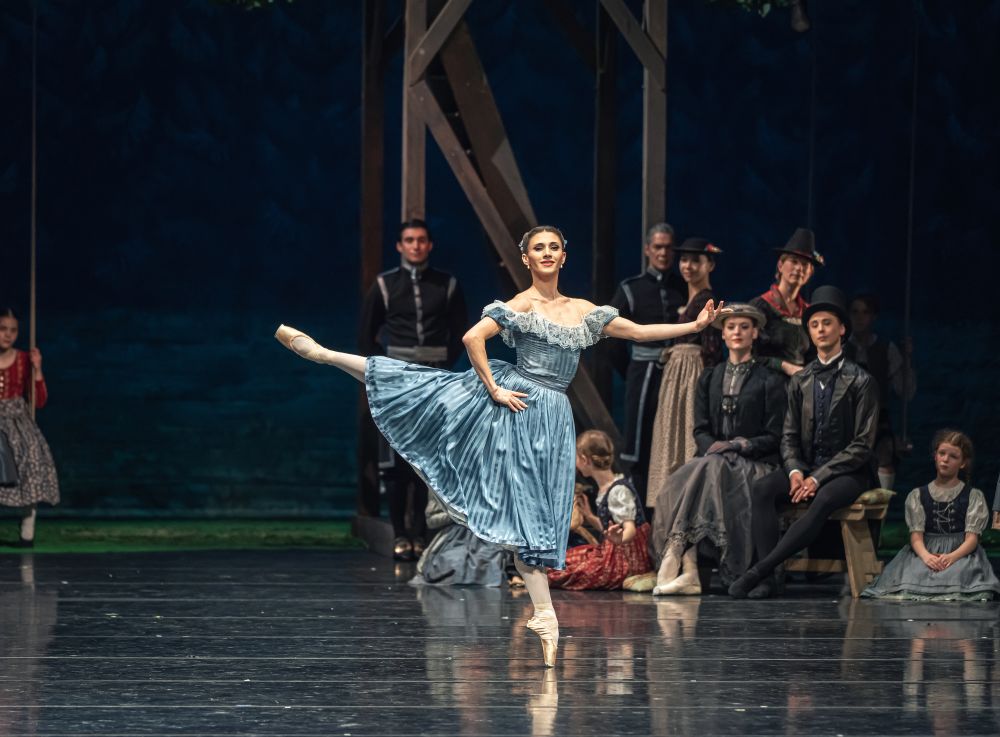
Did he actually teach at the school?
No, he did not give classes, he was coming to see how the teaching was going, then he was taking part in the final exams and evaluations. He was very busy directing and working with the company while always aware of what is going on in the school and who is who. The school also participates a lot in the company work, which is really nurturing because then you slowly adapt and don’t come in a shock there. These experiences are very important for getting into the routine of a company life.
Did you feel mature enough to be a member of such a company? Hope I don´t sound impolite, but you know what I mean. At this age, we often don’t even know what we want to do in life.
I loved and worshiped him and his company and the art they bring into this world so much that I was not questioning myself for my rawness, it was simply a part of my growth. I didn’t know about a lot of things, but I had so much support from him. He kept his wings over us, literally. I felt right being there among skilled colleagues: you’re surrounded with so much experience and great artists who help and guide you along the way, so I felt really good.
The great storyteller John Neumeier
How was it, working with Mr. Neumeier? Is he this type of choreographer that brings the choreography ready and teaches or is he a collaborative type?
Definitely collaborative and he’s very open to the artist. As an artist, you have to do things your way and always “be you”. The most important knowledge for me, which I maybe didn’t realise back then, was that he really taught us the taste in what ballet really is. He opened my eyes, and I saw ballet in a different way. His works avoid superficial showmanship: steps never exist for their virtuosity, costumes are never decorative for their own sake and the storytelling never slips into melodrama. Everything must serve the integrity of the ballet as an art form. Classical discipline combined with deeply human expression, this is why his choreography often feels refined, yet emotionally direct: he trusts movement to carry without excess.
It’s the storytelling, the most honest and direct way of storytelling that is not “played” but really comes from your inside, your deepest inside. So, that is why he was very good at bringing things out of us that we didn’t even know about ourselves. He was making us so comfortable and so inspired that we could really just explode. That is such a standard that he sets that later it doesn’t matter where you go and what you do, this high standard makes you approach every single work in this way: it’s everything, or nothing.
He also showed us the importance of partnership in partnering. He’s very particular about how couples work and the partnership and the chemistry between them. It was highly important that these two people have “a story” together. It’s like being one person in two people. So, this is also something that he made me understand – that you need to make it work together. You cannot do this work alone.
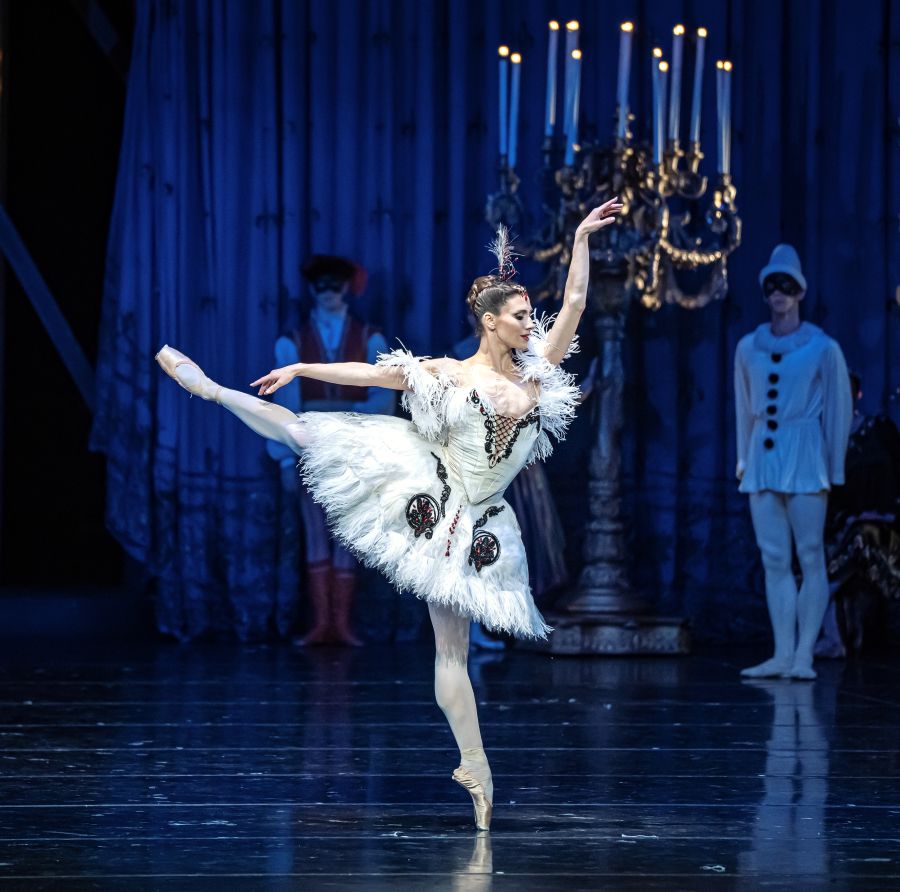
How about your dance partners?
At the beginning I was doing a lot of group work, of course, then I got a lot of soloist opportunities and also learned principal parts, so I had many partners from group dancers to principals. Just before I left, I was rehearsing Manon Lescaut with Ivan Urban. Roberto Bolle once came to do a guest performance, so I was working with him. I mean, I was like 19, so it meant a lot. There were many wonderful partners along the way: Carsten Jung, Alexander Riabko, Thiago Bordin, Kiran West, to name a few. And of course, Otto Bubeníček!
We all know that Neumeier is a great storyteller. So, I suppose he’s working a lot more like a director than a pure choreographer?
He definitely is a director, sometimes I feel like he works as a film director in a way. He knows exactly what everything will look like from every angle on the stage. He knows when and how much you have to move, how much you have to express and how much you don’t, because sometimes silence can speak much more than a lot of movement or expression. In his ballets, you see that the timings bring a lot of expression. So, he’s really a genius in this. The audience can connect and follow the story very easily. He has incredible intuition in choosing people who are talented and have the sensitivity to bring out all what he wants from them.
Did he put a lot of emphasis on the technique as well?
Sure, but it’s a basic part of the profession of ballet artist. Technique is up to you to work on, it’s your routine, it’s what you work on in the school, prepare and then you train it. In the morning trainings and during rehearsals also, but that is not the most important aspect in a performance. The energy you deliver and how you create in the movement, what you communicate to the public, the dialogue between you, your partner and the public – this is important.
I suppose you prefer storytelling ballets to abstract pieces.
I enjoy both, but I was raised on storytelling ballets, so it’s very natural for me. It’s always interesting to portray another story, to be someone else, to live another life on stage. It’s mind opening. And I do enjoy the process of the research. When you read the books and research other artists who danced the roles before, how they did and how they felt and the history itself… So, it’s not just about you doing the part, but there is so much “baggage” that comes with it that you learn so much. I’m like a sponge, you know, I take everything. Or, I feel like a projector, I receive information, wishes and the vision of the choreographer and then I try to project whatever I’m asked.
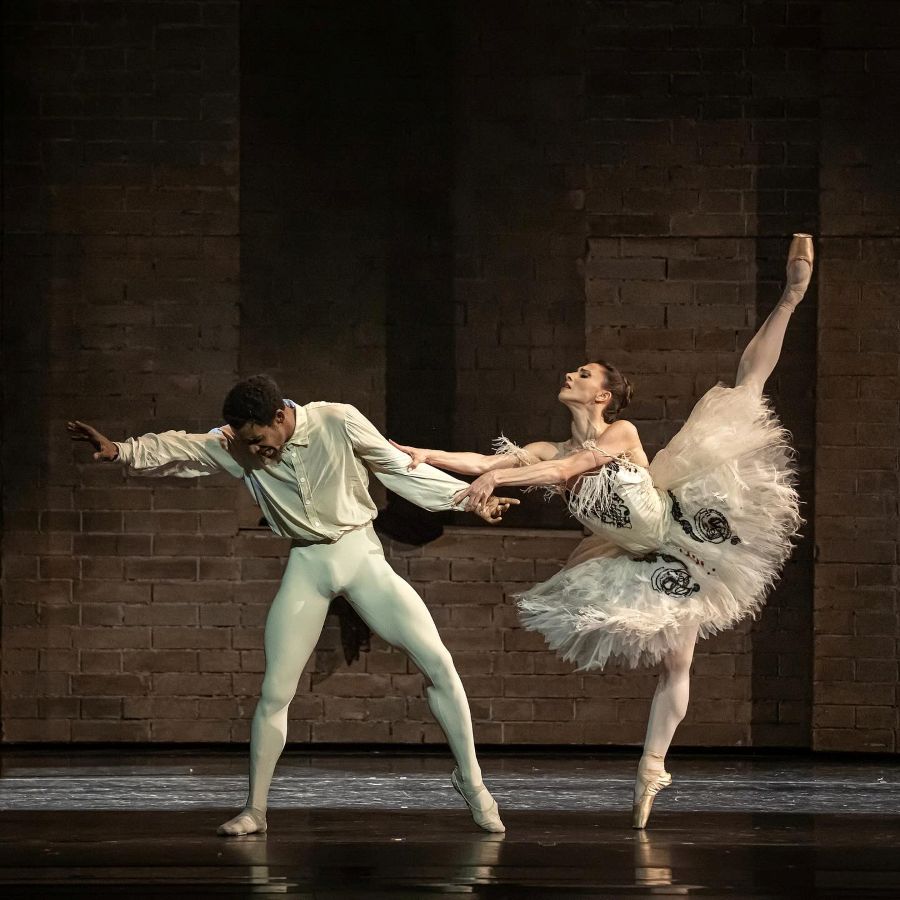
Not everyone goes that deep in researching. Someone just learns the steps.
You also need time to work this way. People are different. I do enjoy everything that comes with the role, with the ballet, because I feel that as a dancer, you are part of it, of its history.
Like when you study Romeo and Juliet, you read Shakespeare?
Definitely. It sets you up in the mood of that time, of that epoch, it helps you understand how people behaved, what were the manners and what was the social currency. What was accepted, what wasn’t. It helps you to understand better why this character behaves like this. Because you want to feel as natural as possible when you go on stage to embody somebody else.
With your movement, you are talking about things from our deep past which we do not understand, since we do not live this way anymore.
Yeah, exactly. I think it’s a way to appreciate the history, the tradition, and what brought us here today. Great stories and great writers are important. It’s a blessing to have a profession that gives you all that. You also realize that culture is highly important.
The magic of stylization
When you’re studying and watching the videos of previous performances and dancers, how do you keep your own way and not try to mimic?
This is definitely what John helped me with, and not only me. He let us ask ourselves: “Is that you? Do you like who you are?” What you feel is the most honest way to express, because it’s true. We do look at each other and we want to learn from each other, true. But we must not lose ourselves. Of course, it is a competitive field, and you do get inspired from your colleagues, so it’s good to look around and see how people evolve. I like to see the evolution of this profession, because you know, modern times and standards are different. If it’s not honest, it’s not art.
Speaking about research, you also danced La Sylphide. If it was reconstruction, how did it feel to dance it in a way that was supposed to look like in the early Romantic era?
Taglioni’s original choreography is lost, so we do not actually know what it was supposed to look like… I danced two versions, Bournonville and the creation by Pierre Lacotte. The Danish version in the Boston production was staged by Sorella Englund from Royal Danish Ballet. That was a very precious experience. As well as the version by Pierre Lacotte, which I danced first time in Hamburg, as a group dancer, and second time in Munich when I did the main part.
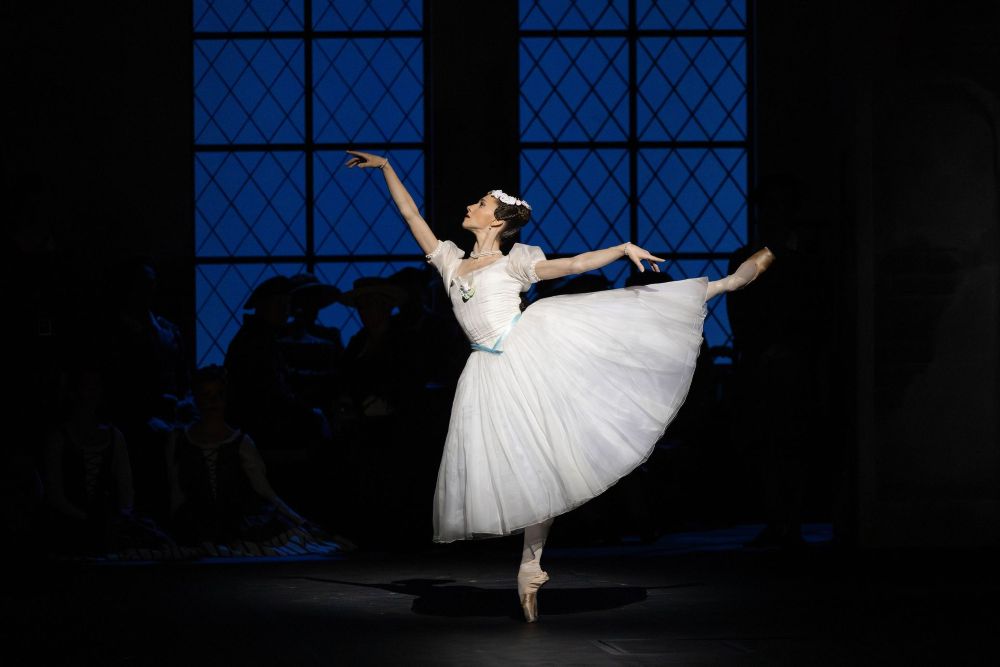
Is there a huge difference between the French and Danish version?
Yes, not only in terms of technique, but also the characters differ. I think in the Bournonville version, she is more of a… fairy? I mean she’s a fairy in both productions, but in Bournonville she is more of a light fairy, always up in the air, running around, she’s barely touching James, actually never. In the French story, I understand she is more of an idea of a woman, an ideal woman that James has imagined for himself. So, she’s some kind of “creature”, but maybe not necessarily a fairy, living more in his own imagination and more grounded in the sense that they have a bit more contact, they get to touch each other, more of a direct dialogue. But in the end, it’s only a dream, in both ballets.
What other differences can we spot?
Lacotte leaned into the decorative charm of early Romanticism. Softer arms and more ornamental port de bras. Bournonville’s version lives as a continuous tradition marked by modesty, purity and buoyancy. Quick footwork and understated arms. Lacotte’s version is more ornate and French in style, aiming to resurrect Romantic idealism.
Technically speaking, is it hard to switch to these really early Romantic types of ballets? Like some elements are done on a demi-point, even though they are normally done on a full point, you must probably think about your legs being lower than usual…?
Definitely yes, but the technique is built in a way that it actually feels natural. For example, it is naturally better to put legs lower because then you are faster with the batteries and so on. High legs wouldn’t fit with the long skirts, so it’s actually quite logical, how you can transfer into this Romantic era ballets. Of course there are more differences, the body is leaning much more forward, everything is more leaned and not “cubicle” (Ed. note: We are talking about the principle of how, in classical dance technique, the dancer’s body should be positioned in space, which is determined by four main points.) Like in Don Quijote or Nutcracker, where the showing off the body, the positioning is different. So, there’s a lot of stylization.
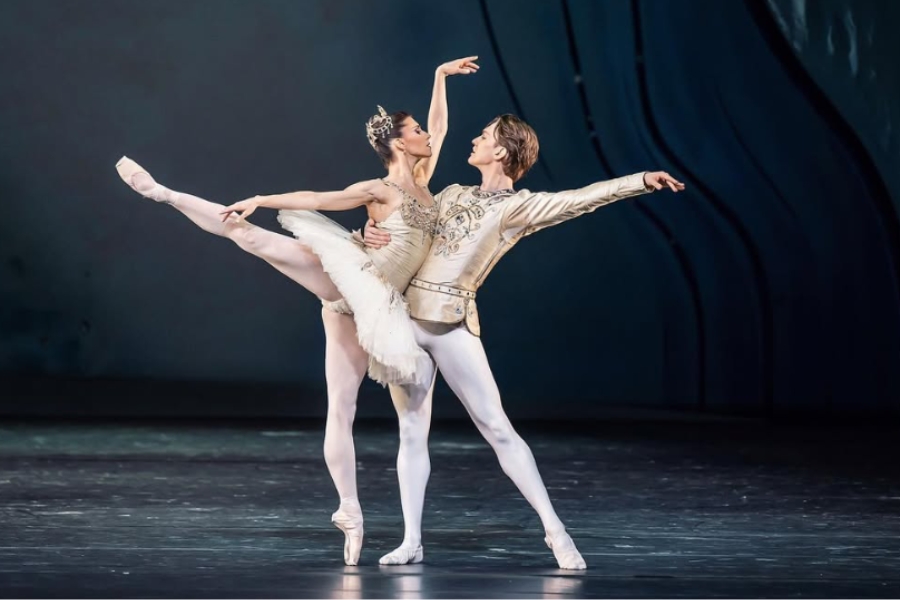
It is difficult to describe the different styles.
I think that every single ballet has that – its own style. And artists and ballet masters, everybody has to work on the stylization of a specific ballet. You know, if it’s Don Quijote, it has to feel Spanish etc. Regarding Romanticism, iconography helps in discovering the right body language: you should see the pictures, portraits of the Romantic era, how the postures of women are, their shoulders. The stylization is a crucial part of every single ballet. The technique is always built on the same vocabulary and steps, but you stylize it with your arms and your body posture etc.
It’s a never-ending process; you always keep learning. It’s not like you achieve something and you are done. Even if you become a “star”, it doesn’t mean that it’s over, on the contrary, you have much more work ahead of you, to keep the level and to grow higher. Every single day you have to go to training, you have to do your discipline, and you have to try better and more and hit your limits and go beyond them.
The American dream (?)
When you were in America, you also started studying business management. How did this happen?
Because Boston Ballet has a really great deal with Northeastern University. All the dancers can study there, the agreement is covering a lot of the expenses that you would otherwise have to pay, because the universities are private and very expensive. But they encourage dancers to find ways to future careers. In Boston, they offer these great conditions, and a lot of dancers do it. The team from Northeastern is coming every week to the ballet centre, helping out with whatever you need. So, that’s a really unique programme. I wish more companies did this. But you see, in America things look very much different because companies are not funded by the government, but the government does not regulate them either. So, they set their own rules and system. It’s run by sponsors, private or company sponsors. It was a great experience to see how the business world of ballet works; in America they’re very transparent about it. Because if there is no money, then there is no show.
While in Europe we separate the worlds of art and commerce, art and business.
Well, our system with support from the government is fantastic because you don’t have to worry so much about your future. In America, you don’t know. If you don’t have money, next year the company may stop existing. So, in Europe we don’t have those worries, but of course, the company then belongs to the system, so… You cannot easily switch things like in America because there’s the system and bureaucracy and you have to go one way. It’s just a very different world. Different rhythms of life, different contracts, different conditions.
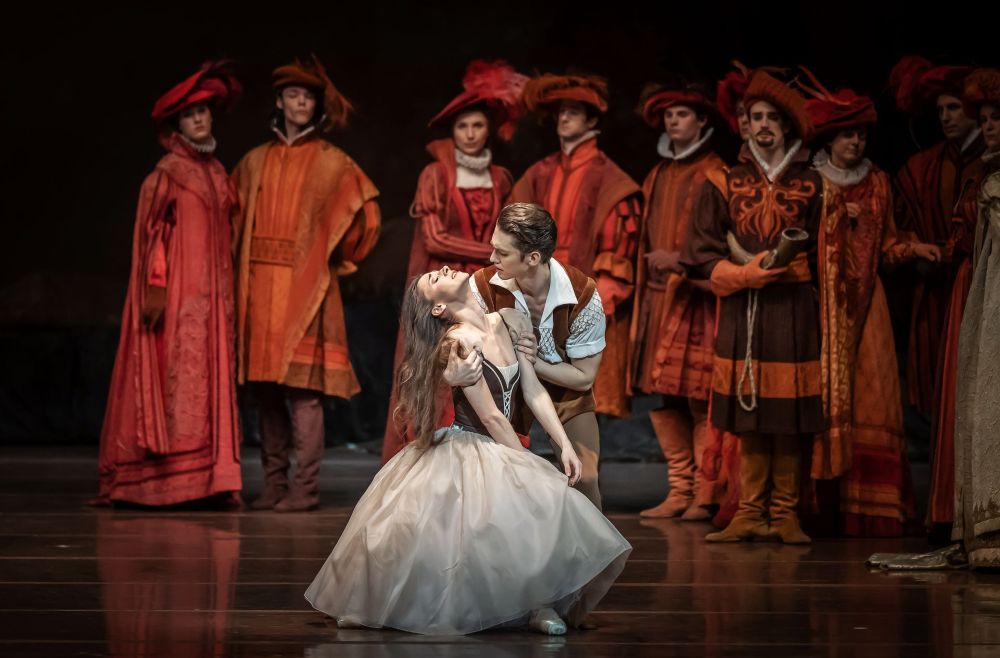
When you were in America, how much did your practical life as a dancer differ from when you worked in normal theatres here in Europe?
Ballet companies in America usually don’t own a theatre, so they always rent it. It’s not like in Europe when you are in your own house where you rehearse many different programmes at once and play them all at the same time. In America you concentrate only on rehearsing the pieces for three months and then you move to the theatre for like 2 months and you perform them. You only perform. Like, you do rehearse, but much less than here, because every single evening you have a show. When it’s Nutcracker period, then you do 45 Nutcrackers. And then the rent of the theatre is over, you go back to the studios and prepare for the spring season. So, you’re again rehearsing for two, three months and then you go to the theatre with another title.
In Europe you keep on rehearsing a production and preparing another one, you usually have different programmes mixed, for example, in Munich, we can have even three different ballet programmes in a week. We do not play in blocks like having ten Swan Lakes in a row, you can have Swan Lake, Nutcracker and some modern programmes in the middle. As you’re in the theatre, the same place all the time, it’s much more comfortable. In America, time is money, so everything has to be really efficient. You have to make the most out of the time that you have in the studio and on stage. Then also, you have to invest a lot in marketing to sell out houses to get the revenue back. It’s a never stopping working machine.
Can it really fulfil you to play The Nutcracker forty times in a row?
You know what, it does. I mean there are different achievements in different ballets and when I was doing 45 Nutcrackers in Boston, for me, it was an amazing feeling because you’re in such peak shape! You’re constantly on stage and you have no fear, no second thoughts or some doubts. You go on stage, and you simply perform, you are not guessing anything because the more you are on stage, the more comfortable you are. And you can try things out, you can experiment, you can be spontaneous, and it gives you a huge freedom. Even with one ballet you can perform differently. Anyway, you can never do anything the same way twice because the body is constantly changing and you feel different every day, and your partner feels different, so, you always have a new dynamic.
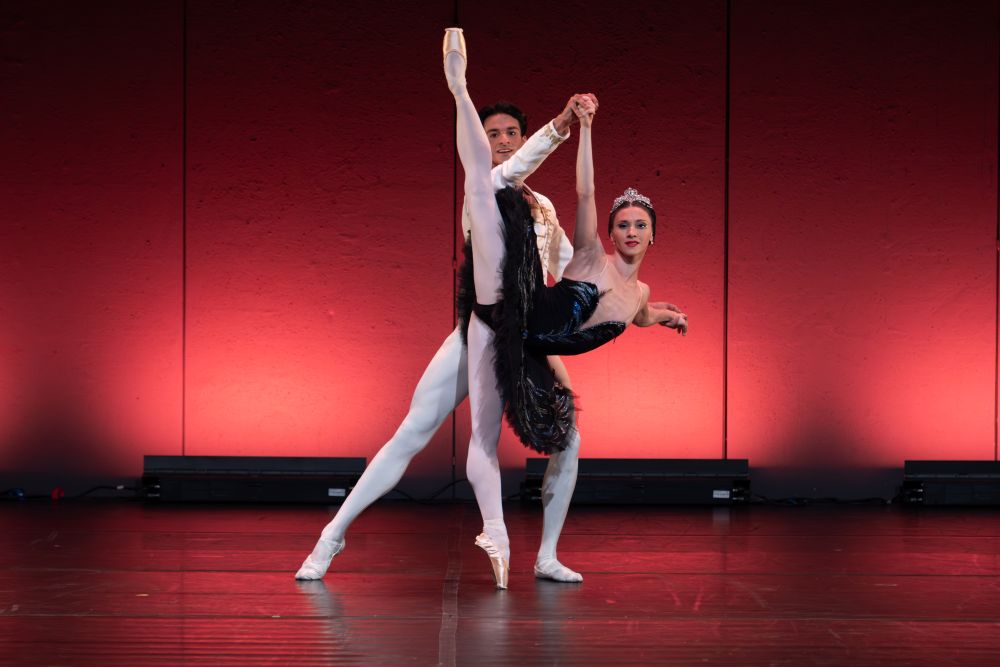
And how about gala performances?
The most important is that dancers have the chance to perform, because a lot of companies are suffering these days, they don’t have the space to perform or they have a very limited number of shows. The more people we have who can create these opportunities, the better. Jiří is now creating another opportunity for artists to perform, that is essential for dancers, not only to rehearse and prepare and train every day but being on stage. That means you accomplish your mission. Gala is specific, it’s like a teaser for you, an invitation to come to the performance. And you can gather so many great artists from all over the world, so you see the international level. That is the point, to see how things are done in different places and to celebrate dance. Yes, I believe the goal of galas is a celebration. The atmosphere is always so festive. There is a special audience as well, supportive and cheering. You feel so close, you’re all going for this one goal to serve this art form, to share the joy you have for this vocation.
Living in the moment
Is it important to you to meet people who are not connected to the arts? Do you have time to escape?
For sure. I meet a lot of people, it’s important to understand who my audience is, how they see the performances or what they want and what they don’t want. It’s important to have this dialogue, constant dialogue. I do take time for that. Of course, it’s true that this job is very difficult because it’s very time consuming and energy consuming. You need a lot of time, you need care, you need to recover, you need physiotherapy, your resting time and you need the time to study and research… Because as I say, every day the work starts from zero. You’re very much in the moment all the time. That’s why I think you truly have to have passion for it, because otherwise there’s no point doing it. Then better admire it from the other side. At the same time there are people who have much more difficult situations with work and life and I feel that’s important to always remember.
What about your family? Is anyone else involved in art or are you the only one?
My parents come from Kiev, Ukraine. My father was a soccer player in the former Soviet Union and then he moved to play in Finland. That’s why I was born there. My mother studied music, but she was mainly a mother because there were three of us. I have two brothers, all of us were doing sports. My brothers were playing soccer, of course. My father put me in ballet because he believed that every child had to have a sport discipline, so as a girl, I naturally went to dance classes.
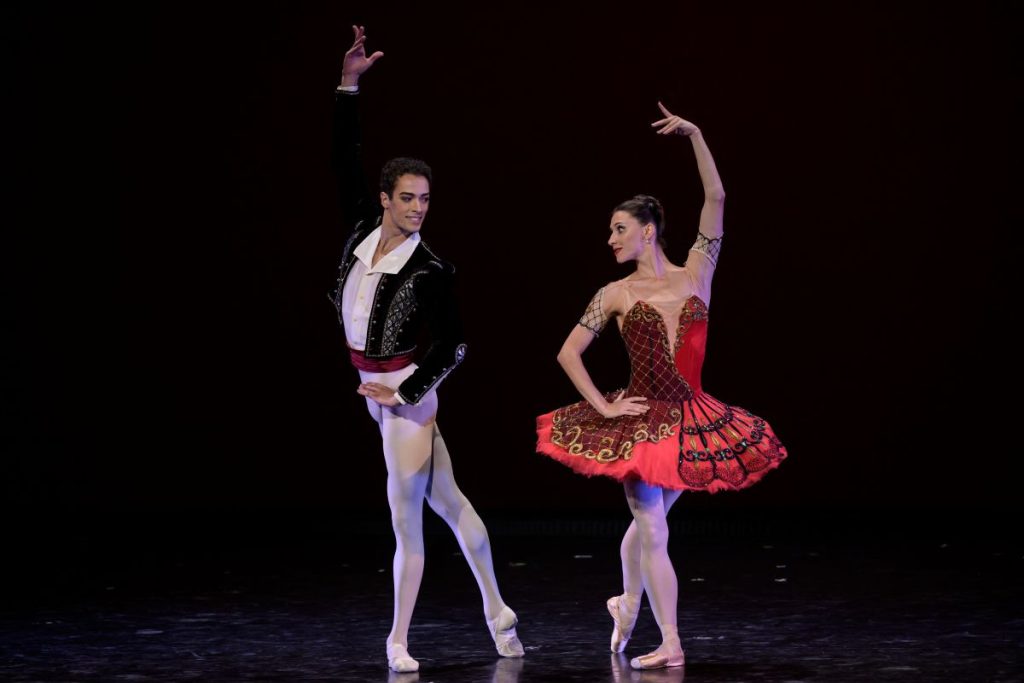
The discipline in ballet is almost the same as in the sports field.
Well, actually, my father says it’s much more of a discipline because it’s many hours of never-ending work. And it’s much more complex because you have performances, partners, music and many more things to deal with. We just don’t have a score that we have to hit.
But ballet can still be very competitive.
It is competitive for sure. And it’s good because it makes you strive and improve all the time.
But how to find the balance? Because we live in this culture of high performance, of pushing limits and going further, further and further. But at the same time ballet is an art form and it has to have some different aim.
Of course the aim shouldn’t be just to do more pirouettes and jumps. That approach as in sports certainly makes it more exciting, for example for galas. Finding balance is also the job of the coaches, repetiteurs, how they balance it out for the dancer. What is what they see? What is necessary in which moment? Of course, technique is a tool that you work with.
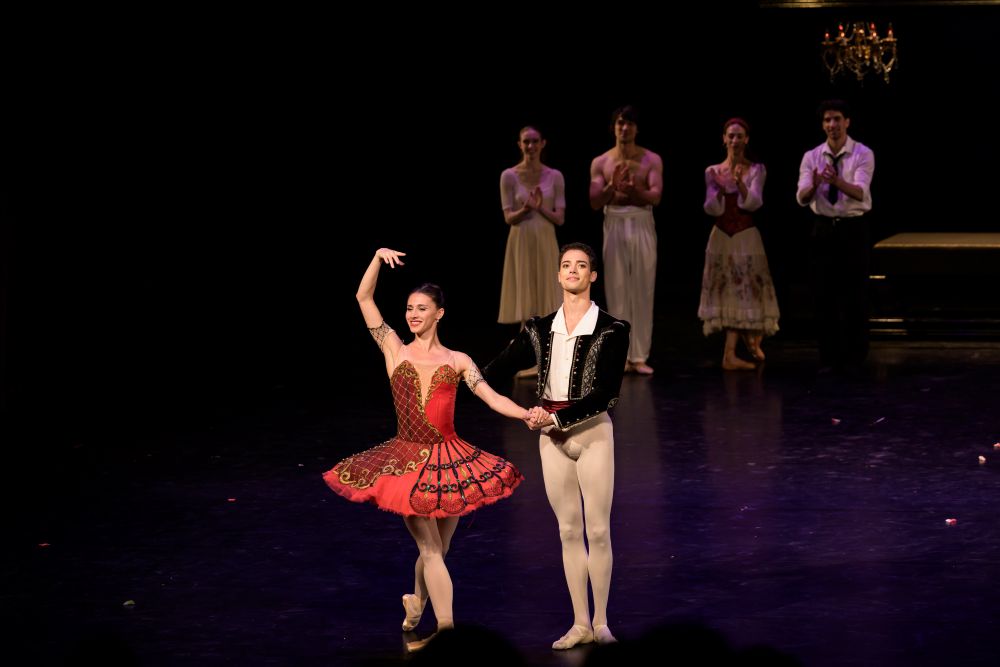
This is metaphorical. As a dancer, you are constantly searching for balance in every element.
Yes, you’re constantly trying to find this equilibrium. And that is why it’s never ending because every day there’s something new that you learn. But it would be so boring if one day you found balance and then what? And life is unpredictable, we never know what will happen tomorrow. Like we had COVID, then the war came… So, I live in the moment, and I appreciate everything.
So, your home is still Finland, even though you have been working abroad for so long.
Yes, I was born and raised there. I still have grandmothers in Ukraine. Before the war we were visiting Ukraine in summer a lot, but of course, now it’s not safe anymore. It’s difficult.
For us, war is also near. Regarding our own history and experience with the Soviet Union, it doesn’t feel good, though we are trying not to think about these things.
I think that situation pushed me to live in the moment even more. Because for me it’s very close, of course, it hits you differently.
Is it better not to think about these things at all? But we are also concerned about cuts in support for culture when more money is being spent on defence…
No, it’s good to be aware of everything that is happening. At the same time, first and foremost we have to work and think about the audience that is here and now, to think about for whom we are doing all this. Culture and arts always bring people together, so they must be supported. That is actually what brings peace and harmony. I don’t make decisions, I’m here to do my best, hope for future peace and try to bring joy to my audience now. Gala performances bring visibility, so they also bring more importance to art. The more people who create this kind of opportunity, this kind of space we have, the more it helps the arts to get support. We cannot just sit and wait for magic to happen.
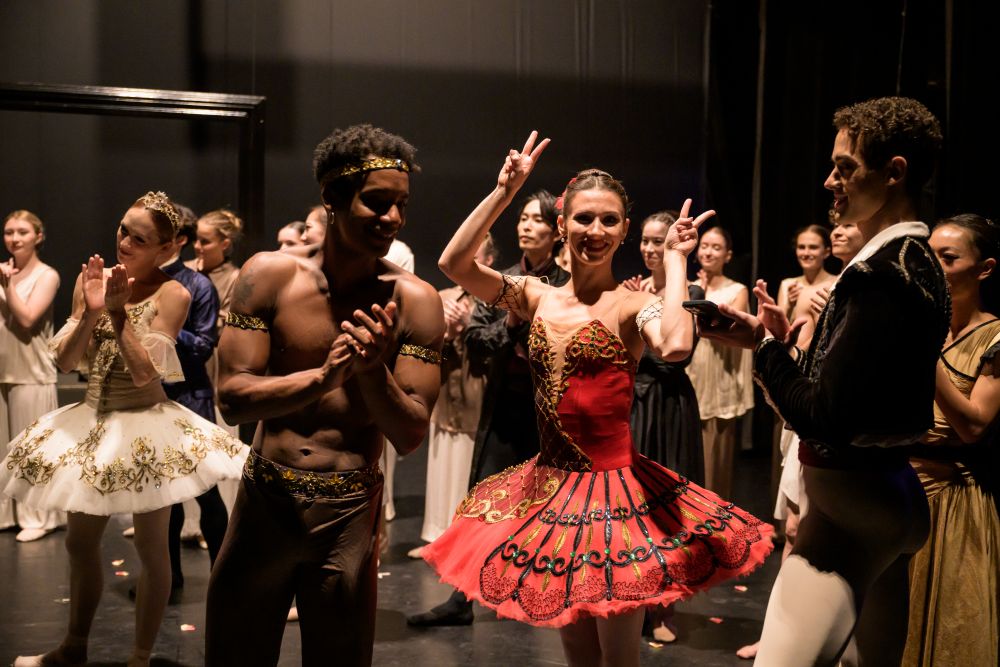
Maria Baranova started her professional training with the Helsinki Dance Institute in 1999. As a student she participated in the prestigious Prix de Lausanne competition where John Neumeier invited her to join the Hamburg Ballet School on a scholarship. Under Mr. Neumeier’s thorough guidance, she quickly moved to the graduating class and graduated within a year. At the age of sixteen, Maria won the Helsinki International Ballet Competition in 2009 (Junior Female Division) and joined the Hamburg Ballet. There, she performed many roles in Neumeier’s original creations as well as various soloist and principal parts. In 2010. she received the Bronze Medal at the International Ballet Competition in Varna, Bulgaria. In 2011, Maria Baranova won the Erik Bruhn Prize in Toronto with the Pas de deux from the second act of Giselle and Chopin Dialogues, a choreography that was created for her by John Neumeier. She was later invited by Kenneth Greve to become a principal dancer at the Finnish National Ballet. In 2015, she received an invitation from the artistic director Mikko Nissinen to join the Boston Ballet as a principal. In Boston, Maria enriched her repertoire with neo-classical and modern ballets by George Balanchine, Jorma Elo and William Forsythe. In 2019, Maria joined Bayerisches Staatsballett as a principal dancer. Her repertoire spans from classical to neo-classcical and to contemporary ballets, as she worked with many of today’s leading forces in dance, including choreographers Justin Peck, Jacopo Godani, Pierre Lacotte, Patrice Bart, and David Dawson.


